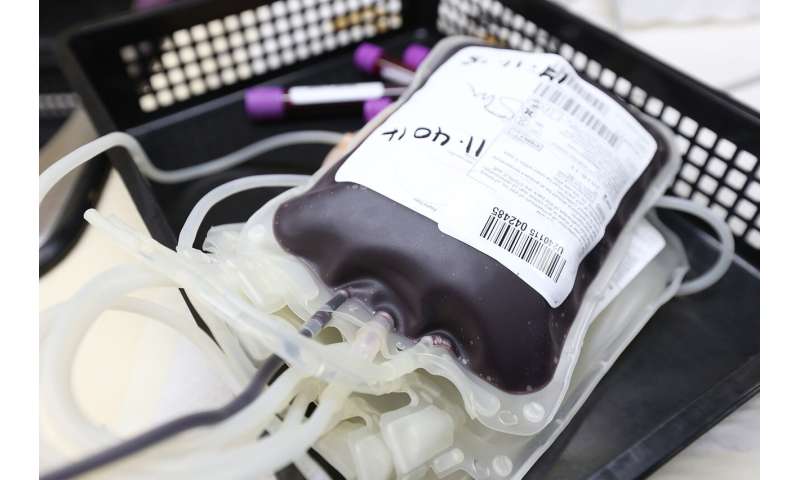

When blood is needed for major trauma outside of a medical facility, the risk of hypothermia increases when a patient is transfused bags of blood taken directly from chilled storage. Flinders University researchers, knowing that warm blood results in better transfusion outcomes, have found that a simple, one‐piece, disposable latent heat fluid warmer provides a safe solution to overcome this problem in emergency situations.
“Major trauma is associated with blood loss and hypothermia. It’s common to replace lost fluid with red cells stored at 2-to-6 degrees celcius, and colloid/crystalloid fluid stored at ambient temperature, thus increasing hypothermia risk,” says lead researcher Dr. David Roxby. “A safe, speedy and reliable means of warming blood outside of medical facilities therefore needs to be confirmed.”
The researchers tested portable latent fluid warmers manufactured by Logikal Health Products in New South Wales. Each fluid warmer consisted of a plastic bag with two chambers—one containing liquid calcium nitrate tetrahydrate, and the other containing some solid calcium nitrate tetrahydrate, separated by a frangible plastic strip.
Fluid warmers powered by solidifying calcium nitrate tetrahydrate have not previously been used clinically, but this test showed that a latent heat fluid warmer can safely warm transfused blood in a controlled clinical setting.
The paper—”Warming blood prior to transfusion using latent heat,” by David Roxby, Magdalena Sobieraj‐Teague, Jacoba von Wielligh, Romi Sinha, Bryone Kuss, Anne‐Louise Smith, and Mark McEwen—has been published in Emergency Medicine Australasia.
At trauma and medical retrieval sites, mains electricity-powered fluid warmers cannot be generally used. Therefore, latent heat from fluid warmers that raise the temperature of the red cell units to approximately 35°C provides an alternate practical method of portable temperature‐controlled intravenous fluid warming—and this new research proves it is a safe and efficient way to administer better blood transfusions.
“The great advantage is that latent heat can warm fluid to normal body temperature without electricity,” says Dr. Roxby.
“This study proves that a portable latent heat fluid warmer—which weighs only 2 kg and warms up in less than one minute—is safe to use and does not overheat.”
Currently, intravenous fluid warming for emergency situations in remote locations is being done by a range of methods which have limitations and even potential dangers. Using warm water to heat fluid bags may take too long to reach the required temperature and carries a risk of bacterial contamination. Electric warmers often need external batteries that take vital time to assemble, and need to be kept charged. Some chemical reactions can heat fluid above normal body temperature, potentially damaging the blood product.
For the trial, physiological signs (oxygen saturation, pulse, temperature, blood pressure, respiration) of 25 hematology patients remained stable and no transfusion reactions were observed during warm transfusions.
Source: Read Full Article